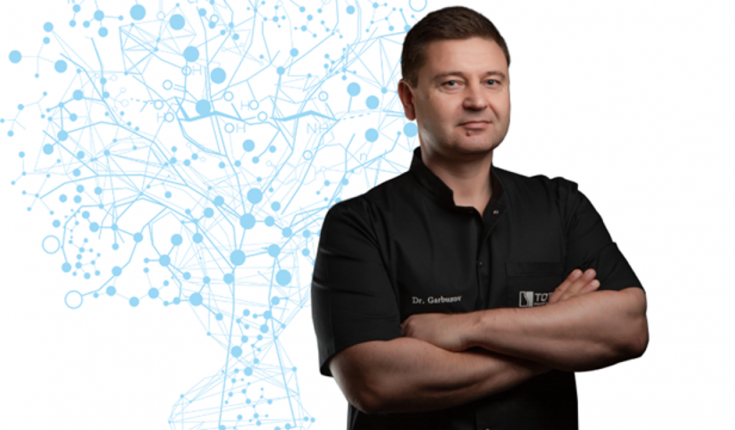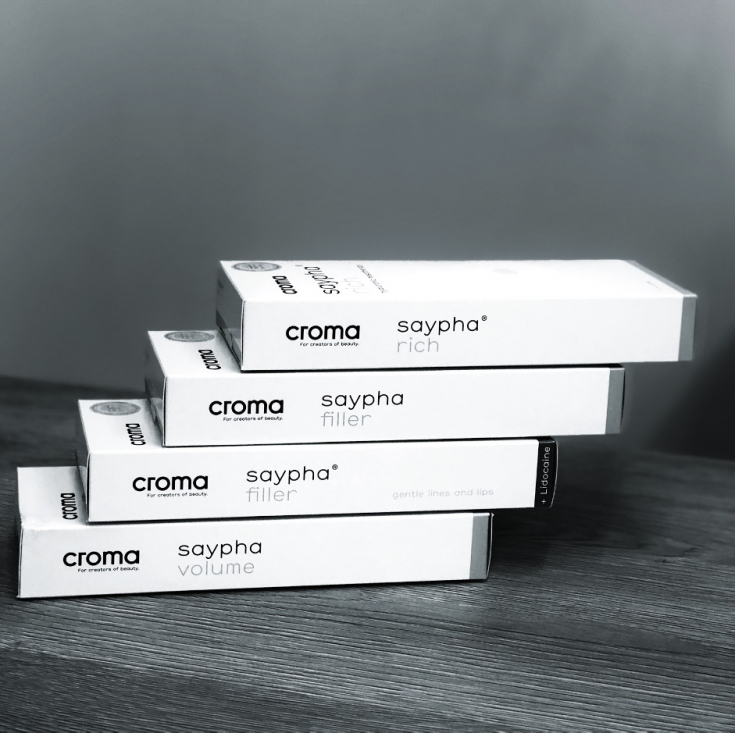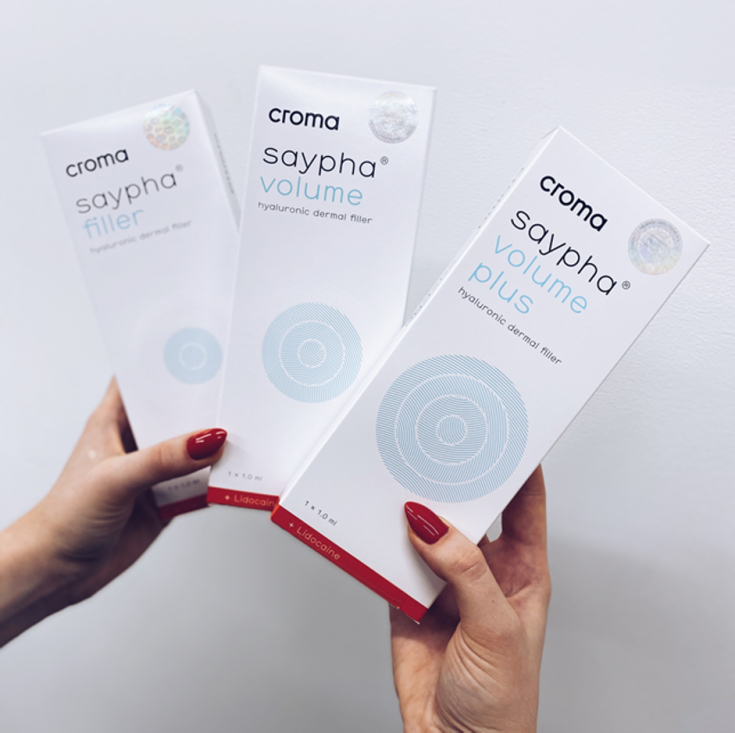Young patients are increasingly turning to cosmetologists. Unlike older patients who want to remove the signs of aging, younger clients come to change their appearance in accordance with social media trends.
The doctor's task in this case – understand what the young patient wants and adjust the desired look to a natural and casual look.
In the article estet-portal.com Dmitry Garbuzov – PhD, dermatovenereologist of the highest category, chief physician of the DECOclinique clinic, international speaker of Croma, speaker of the dissection cadaver course at the Medical University of Vienna – describes the safe and effective contouring with Saypha fillers that will satisfy the wishes of young patients.
- Harmonizing the Face Selfie Profile 3/4: Important Aspects
- Non-surgical rhinoplasty: goals, preparations, basics of safe work
- Lip augmentation with fillers: goals, techniques, preparations
- Chin contouring: main goals and preparations
- Mandibuloplasty: goals, techniques, preparations
- Non-surgical malaroplasty: goals, techniques, preparations
Harmonization of the 3/4 face selfie profile: important aspects
Dmitry Garbuzov – Candidate of Medical Sciences, Dermatovenereologist of the highest category, Chief Physician of the DECOclinique clinic, international speaker of the Croma company, speaker of the dissection cadaver course at the Medical University of Vienna

Instagram has become an integral part of the lives of girls who strive to become even more beautiful (in their opinion), trying to fit themselves to the standards of the social network. This influenced the emergence of new selfie accents in appearance, and as a result, facial contouring procedures.
In harmonizing the selfie profile of the face , the most important aspects are:
- rhinoplasty;
- Instastyle lips;
- mandibuloplasty;
- malaroplasty.
Before proceeding with facial contouring, it is important to assess the profile of 3/4 of the patient. This process is based on profilometry – study of profile parameters, which allows you to get the best result when correcting the face with fillers.
Fillers Saypha from the official distributor of TOTISPHARMA GROUP provide the most natural and aesthetic results, including in young patients. Saypha's new generation fillers make the doctor's job easier and reduce the risks for patients because:
1. They contain a low concentration of BDDE.
2. For the administration of drugs, a unique glass syringe is used, which:
- ensures uniform, smooth filler insertion;
- is harmless and minimizes the risk of complications;
- helps control injection accuracy;
- makes the procedure comfortable for the patient.
3. The fillers are designed to a high standard quality.
4. The line includes preparations that make it possible to work in various areas of the face and effectively solve a whole range of aesthetic problems.
Non-surgical rhinoplasty: goals, preparations, basics of safe work
Main goals of non-surgical rhinoplasty:
1) harmonization of angles in the area of the nasolabial and nasolabial parts;
2) masking of osteocartilaginous fibrosis;
3) solution of aesthetic imperfections.
When working with the nose, there is a risk of vascular complications, especially if the patient has previously undergone surgical correction of the nose. As a result of surgery, the anatomy changes: dangerous areas become less predictable and therefore the risk of vascular complications increases.
When correcting the area of the nasolabial angle, the collumellar flexure, it is important to remember the location of the artery. The drug is injected supraperichondrially into the area of the tip of the nose and supraperiosteally if the procedure is done in the area of kyphosis and above.
Read also: Perfect HA fillers: reference safety, ease injection, maximum lifting, long lasting effect
1. Nasolabial Angle Correction
Non-surgical rhinoplasty requires a high G’ drug that is able to resist dynamic deformation, – Saypha Volume Plus.
Before correction of the nasolabial angle with fillers, if the patient has a very active muscle that lowers the nasal septum, it is important to preliminarily carry out botulinum therapy, otherwise contouring may be ineffective or its result – not long-term.
The filler is injected into the nasolabial region, the tip of the nose and into the central chin pack to visually hide the enlargement of the nose.

2.Kyphosis
For the safe correction of nasal kyphosis, it is better to choose a cannula. For optimal results, the filler is injected above and below the kyphosis.
3. Aesthetic imperfections
Patients love the visual effect of rhinoplasty when the doctor “highlights” bridge of the nose and models the result along a line that will reflect the light. In this case, the filler is injected in a linear retrograde way along the bridge of the nose.
Lip augmentation with fillers: goals, techniques, preparations
The main goal of lip augmentation with fillers is harmonization of the upper and lower lips along the Ricketts aesthetic line. And if earlier patients requested a visible effect of lip contouring, now more natural results are in trend.
Anatomy of safe lip contouring
Anatomically, the lips consist of cutis (skin), subcutaneous fat and the marginal part of the orbicular muscle of the mouth.
Studies have shown that the superior labial artery most often passes in the submucosal layer, in 17% - through the muscle and in 1.7% of cases – in the subcutis (under the dry mucosa).
Injection of the drug into the cutis
The introduction of the drug into the cutis is associated with a low risk of vascular complications. Work in this layer is carried out with the aim of:
- contouring;
- prevention, therapy and camouflage of age-related changes.
Correction is carried out with a needle in the techniques of mesotherapy, biorevitalization, bioreparation and contouring.
Croma products that are ideal for this area are Saypha Rich and Saypha Filler.
A small amount of low reticulum preparation is injected into the cutis to reflect light. The result of the correction is stored for 2-3 years. Contouring often allows you to get the effect of "beautiful lips".
Introduction of the drug into the pancreas
It is the subcutaneous fat that is the target layer for 90% of lip correction techniques. Work in this layer is safe, only in 1.7% of cases the superior labial artery can pass through the pancreas.
Goal: fullness, height increase of the vermilion
Techniques: contouring with and without separation
Instrument: needle, cannula
Product: low or medium modulus of elasticity G’ (Croma Saypha Filler, Croma Saypha Volume).
The choice of technique, preparation and technique is determined by the anatomy of the target zone.
Injection of the drug into the labial portion of the perioral muscle
Goal: 180–360 degree repositioning of the lip using contour plasty technique. The procedure is carried out with a needle, a filler with a high elasticity modulus is injected. The introduction of a filler into this layer is associated with a high risk of vascular complications, and therefore is not recommended.
Injection of the drug into the submucosal layer
This administration is also associated with the highest risk of vascular complications. His goal – changing the position of the lip with maximum eversion.
To achieve this goal, contouring is used: a drug with an average elasticity modulus is injected with a needle or cannula. Such a correction is advisable for orthognathic problems.
Chin contouring: main goals and preparations
The goal of chin contouring (non-surgical genioplasty) is to harmonize the chin region in the sagittal and vertical direction.
To achieve this goal, a preparation with a high elasticity modulus (G) and viscosity is used. The filler is injected supraperiosteally with a needle or into the medial deep chin pack with cannulas. To create maximum projection, the drug is administered as supraperiosteally as possible.

For chin contouring, Saypha Volume Plus filler is used, which has maximum density, viscosity and reticulation. The effect of the correction lasts more than year – up to 14 months.
Mandibuloplasty: goals, techniques, preparations
Goals of lower jaw contouring:
- creation of a clear line of the lower jaw;
- correction of involutional changes in the posterior mandibular region;
- mandibular angle highlighting (in men).
Before working with the chin and lower third of the face with fillers, it is advisable to reduce the tone of three muscles:
- chin;
- depressors of the corners of the mouth;
- platysma.
Fillers in the lower jaw area are injected into the superficial fat layer – this allows you to carry out the most safe correction, as well as create any angles and accents.
Read also: Calcium hydroxyapatite fillers: predictable and long-term results of injectable facial correction
The work is carried out with a preparation with an average or high elasticity modulus (G) and viscosity by a cannula or needle.
Non-surgical malaroplasty: goals, techniques, preparations
The purpose of malaroplasty in women – aesthetic harmonization of the zygomatic-malar area.
This area is corrected with high modulus and high viscosity preparations (Saypha Volume Plus).
When working with the zygomatic-malar zone, you can start correcting the cheekbones only if the patient does not have:
- nasolacrimal sulcus;
- mid-buccal sulcus;
- palpebromalar furrow;
- cheekbone pouch.
In this case, you can form an accent in the lateral SOOF. Otherwise, isolated work in the lateral SOOF may highlight the above imperfections.
Before working on the lower third, you should always pay attention to the middle third of the face.
In other cases, you should restore the position of the zygomatic ligament, and then proceed directly to work with the cheekbones.
Filling with fillers in the middle third should begin under the ZCL (zygamaticus cutanes ligament) drugs with high elasticity modulus and high viscosity (Saypha Volume Plus) supraperiosteally with a needle or cannula.
Thus, with the help of the new generation Saypha (Croma) fillers from the official distributor of TOTISPHARMA GROUP , it is possible to harmonize the 3/4 face profile and satisfy the requirements of a young patient, observing principles of safe work and having obtained natural and long-term results.
More interesting videos on our YouTube-channel!







Add a comment